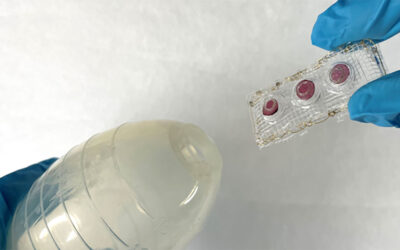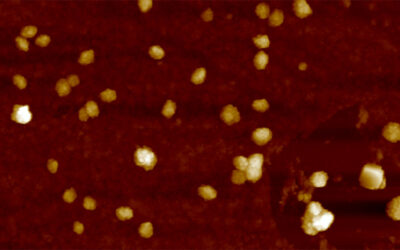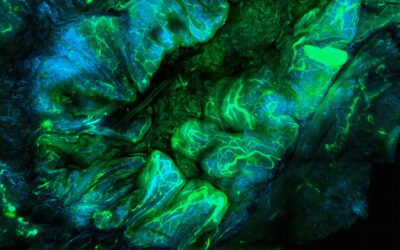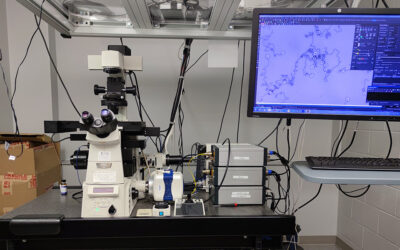Researchers have supercharged the revolutionary gene-editing tool CRISPR, transforming it into a lightning-fast diagnostic test that can detect deadly pathogens in blood with unprecedented sensitivity and minimal labwork required.
In 2012, the world was introduced to the powerful gene editing tool called CRISPR. Discovered in bacteria decades earlier CRISPR is a clustered sequence of repeating DNA base pairs used by bacteria to recognize and bind viral DNA strands. Once bound, a group of enzymes, called Cas, cut the viral DNA rendering it harmless.
Researchers realized that CRISPR and the Cas enzymes could be modified to recognize and cut DNA sequences of interest, making it a powerful and precise gene editing tool. With a few modifications, it can also become a rapid and accurate diagnostic tool.
“One of CRISPR’s powerful features is its ability to find and bind to very specific DNA sequences,” explained Rashid Bashir, professor of bioengineering at the University of Illinois. This ability to recognize DNA sequences makes it useful for diagnostics as it can efficiently find pathogen DNA in a person’s blood.
“Some CRISPR enzymes such as Cas12a come with a special ability as one they recognize their target DNA they begin to cut nearby single stranded DNA,” said Bashir. “By including special reporter molecules at ends of small DNA sequences that glow when cut, we can turn the CRISPR enzyme into a highly specific sensor that can produce light in the presence of a certain pathogen.”
The one problem is detecting the small amounts of light produced by these microscopic reactions. Originally, researchers, like Bashir, were required to amplify the signal by first using tools like PCR, which selectively makes thousands of copies of a small amount of DNA. This process requires special equipment and takes several hours. The need for amplification reduced the speed and mobility of the test, as samples needed to be brought to a lab and amplified.
Pre-amplification also reduced sensitivity of the test as the target DNA needed to be artificially increased for the signal to be seen. This motivated Bashir and his colleagues to ask, “What if we could develop a system that works without any pre-amplification at all?”
A bump in sensitivity: Breaking free from lab-dependent testing
To make the fluorescent signal detectable without amplification, the researchers created a two-step process. “The first part searches for the pathogen’s DNA,” explained Bashir. “If it finds the target, it triggers a second reaction that acts like a chain reaction, continuously increasing the signal.”
The second reaction relies on a molecule designed by the research team which is cut by the CRISPR enzymes after the pathogen DNA is found. “Once cut, it releases more elements that drive the next round of signal, forming a positive feedback loop,” added Bashir. “With only a few copies of a pathogen’s DNA, the system can produce a strong detection signal without the need for any prior amplification.”
Using blood with a variety of bacterial and viral pathogens added — including hepatitis B and MRSA, the bacteria responsible for drug resistant and deadly infections — the researchers found the test consistently produced clear and accurate results in only ten minutes. The tests also confirmed the improved sensitivity of the method.
“This sensitivity is about one million times greater than what a typical CRISPR enzyme assay with conventional optical signal can detect,” said Bashir. “One additional strength of the reported system is its ability to detect multiple pathogens at once. Since many different pathogens can lead to bloodstream infections, having a test that can rapidly rule in or rule out key sources will help doctors begin the right antibiotic or antiviral treatment more quickly and with greater confidence.”
CRISPR’s popularity as a gene editing tool means the components needed to produce the diagnostic test are widely available.
“This test has strong potential for scalability,” Bashir said. Furthermore, by designing the test to use common reagents and function at moderate temperatures they also ensure it’s widescale applicability. “It does not rely on expensive or complex machines,” Bashir said. “This makes it suitable for a wide range of environments including hospitals, local clinics, and mobile testing units.”
The team is now working to improve this applicability as the technique still requires a sample preparation step where the DNA in the sample is extracted. “We are actively working on ways to integrate this or bypass steps such as blood culture entirely,” said Bashir.
Reference: Jongwon Lim, et al. Amplification-free, OR-gated CRISPR-Cascade reaction for pathogen detection in blood samples, PNAS (2025). DOI: 10.1073/pnas.2420166122
Feature image credit: Unsplash

















